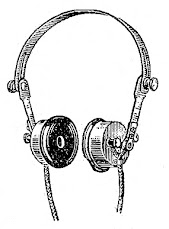skip to main |
skip to sidebar
Lunes 21, 19:00
Fundación Maphre
El código DaVinci, Matrix, Robert Zemeckis y un larguísimo etc. La propaganda cristiana se desarrolla hoy entre los límites de lo bizarro y lo patético (si es que existe tal límite).
Los creacionistas (pseudociencia apoyada por La casa Blanca), aterriza en Madrid, para demostrarnos cual que la reserva espiritual del mundo sigue siendo tal y como era. Para los no iniciados en el "diseño inteligente", aquí podéis consultar la página del Museo de la Cración. Y para los realmente curiosos que quieren ver las dos caras de la moneda, no duden en ir al centro cultural Árabe junto a la M30 (Barrio de la concepción) donde encontrarán material traducido, menos famoso y posiblemente de elucubraciones científicas más libidinosas.
¡¡¡Acudid!!!
Hay que registrarse en www.loquedarwinnosabia.com

What Darwin Didn’t Know
Geoffrey Simmons, M.D. Harvest House, 2004
Reviewer: Dave Ouellette
In this book, Geoffrey Simmons, a medical physician for 35 years, puts
forth the following premise: what if
Darwin were to submit his book, “On
the Origin of Species,” for publishing
today? Given what scientists now know, would Darwin’s
theories hold up to scrutiny and get published?
Simmons points-out the vast complexity of living systems
and how in Darwin’s day cellular theory was still in it’s
infancy. He then muses on possible rejection letters Darwin
might receive from scientists. One point Simmons makes is
Darwin didn’t have a clue how complex biological systems
are, but today’s scientists do and it doesn’t seem to stop
them from publishing their naturalistic theories.
In Part I, “Basic Issues,” Simmons begins his arguments
against the theory of evolution by describing the “whole
package phenomenon.” This “all-or-none” concept is built
on Michael Behe’s irreducible complexity and deals with the
problem of intermediates. Simmons argues correctly that
systems such as how the body heals a wound, how insulin is
regulated in the bloodstream, or even why is there sex, are
very difficult to explain in an evolutionary manner.
In the Parts II and III, Simmons examines the complexity of
the human body in terms of external connections (vision,
hearing, balance, etc.) and internal systems (endocrine,
respiratory, gastrointestinal, etc.). In Part IV, “More
Enigmas,” Simmons examines some other very interesting
aspects of the human body such as the built-in self-protection
mechanisms, gifts (communication, imagination, etc.)
and biorhythms (i.e. why do we sleep?).
Overall the book is a good read and helps one realize how
intricate and complex the human body is. One possible
criticism is Simmons often argues certain systems are so
complex they must have been designed. This type of
argument works well with believers but not skeptics. Such
design arguments must be backed up with verifiable data to
be seen as a viable alternative to Darwinian evolution.


